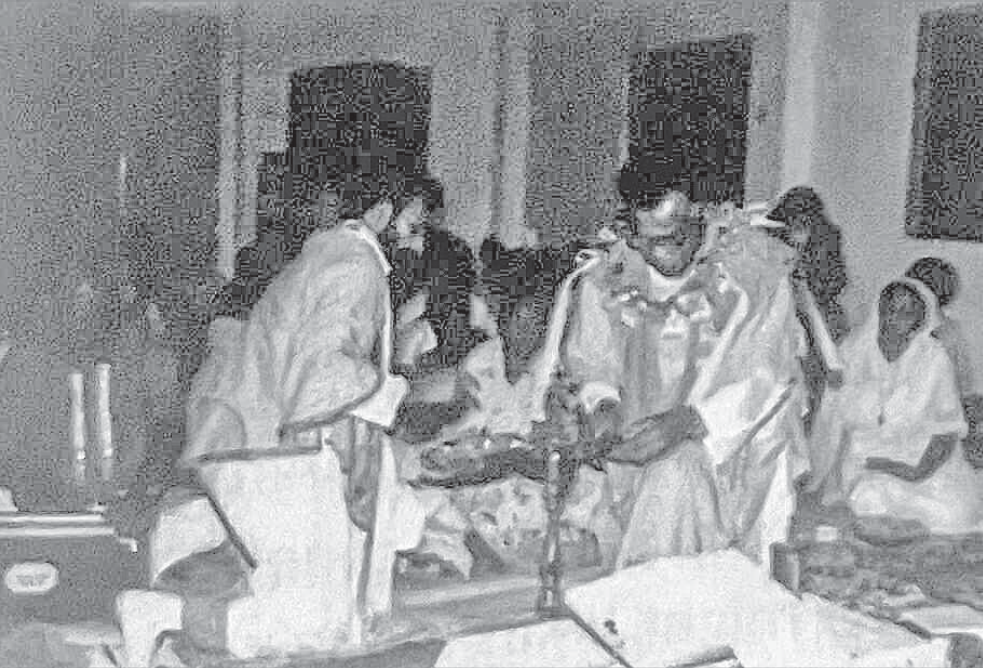After returning from an extended holiday in Ireland in early 1980, a year of study in India, and a brief six-month stint filling in for Fr Kieran Maloney at Navunibitu Parish, a Catholic missionary was given what he calls “a very interesting assignment” to evangelise Indo-Fijian Catholics across the country.
Now based in Lautoka, Colombian priest, Father Frank Hoare works from 1980 to 1985 took him from Labasa to Suva, often for months at a time.
“My role consisted especially of setting up Small Christian Communities, training leaders to accompany catechumens on the journey to baptism, and the inculturation of mass, marriage and funerals,” Fr Hoare said.
The Khrist Jyoti Ashram (Retreat House of Christ the Light) became a focal point for lay leadership training and retreats.
“We organised three-week courses during the December school holidays, teaching on the Old Testament, Jesus Christ, and the church and sacraments.
“More than 80 lay leaders graduated.”
The Small Christian Communities (SCC), inspired by the Vatican II Council and similar in structure to the traditional Hindi mandali, quickly took root. By 1985, there were 25 mandali across Fiji.
“This method familiarises participants with the gospel, supports community through faith sharing and encourages community action in a practical way.”
Courses were also held in the evenings in Suva and Lautoka for those unable to attend the December sessions.
Graduates often became key figures in preparing catechumens, non-Christians wishing to become Catholic, for baptism, confirmation and the Eucharist at the Easter Vigil.
Starting in 1981, the priest encouraged an annual Hindi religious convention, or dharm-sammelan, in Fiji’s three main regions.
“After a well-prepared Eucharist in Hindi, a guest speaker spoke on a relevant topic.
“Mandalis would then perform devotional programs and later contribute entertainment.
“The faith of Indo-Fijian Catholics was strengthened, new ideas were shared, and the community looked forward to the gathering each year.”
The period also saw significant developments in liturgical adaptation. Following the Second Vatican Council, mass began to be celebrated in local languages.
Hindi translations of the lectionary and sacramentary, prepared in India, were introduced to Fiji.
Fr John Reilly SJ, who had worked extensively in India, brought the inculturated Hindi Mass to Fiji in 1969, incorporating Indian-style vestments, gestures and altar furnishings. Reception was mixed.
“Some people were very impressed at the solemn, beautiful Indian style.
“Others were dismayed, believing it gave the impression that Catholics were becoming Hindu.”
This tension between inculturation and syncretism would remain a challenge.
“How can we use a different symbolic vocabulary to be understood? These are difficult questions.”
By the late 1970s and into the 1980s, Indian forms of Catholic marriage became more common, blending Hindu wedding rituals with Christian vows and scripture readings.
Catholic celebrations of Diwali also grew in popularity, often featuring a multiethnic congregation, Hindi Mass, and the sharing of Indian sweets.



